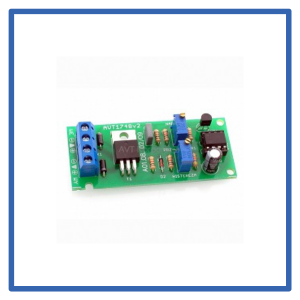Protection of Switch Mode Power Supplies
2020-06-09

The protections for switching power supplies are divided into two groups: input and output.
The protection circuits for the input are more extensive and concern the following:
- Overvoltage protection on the mains (from lightning, motor). This protection is based on a varistor, which absorbs the energy of the overvoltage and converts it into heat and prevents damage to the power supply.
- Fuse protection. Its role is to disconnect the power supply from the mains in a catastrophic emergency, in order to limit the scale of damage and prevent a fire. In most power supplies, fuse failure is the result of a serious power supply failure, e.g. due to flooding, and therefore the fuses are hidden inside the enclosure and inaccessible to the user (non-replaceable).
- Protection against excessively high mains voltages, e.g. due to the power supply being connected to interphase voltage (400VAC). It uses the same varistor which, in such a situation, blows the fuse and disconnects the power supply from the mains.
- Protection against under-voltage in the mains. The operation of the power supply is blocked when the mains voltage is too low, in order to prevent overloading.
The output protections are:
- Power supply short-circuit protection. Disables the operation of the power supply when the output terminals are short-circuited and prevents damage.
- Power supply current overload protection. Disables the power supply when the output current exceeds 125-150% of the rated value, preventing overheating and damage.
- Over-voltage protection. Disconnects the power supply protecting it from damage when the output voltage exceeds approximately 125% of the rated value (approximately 16V for a 12V power supply). Such a situation can occur by mistake, e.g. connecting the power supply to a battery, as a result of damage to the power supply or when working with an abnormal load (accelerated motor).
Well-functioning protection circuits protect the power supply from damage in most emergency situations.
